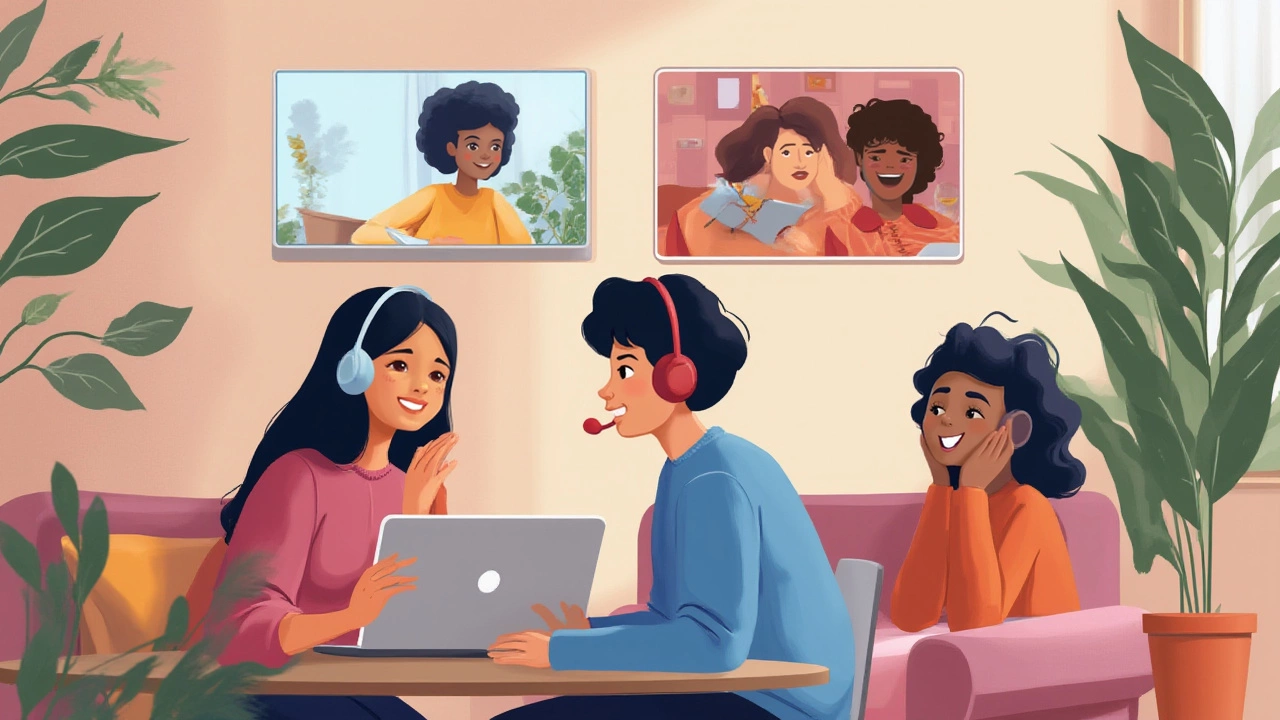It's shocking how quickly distance learning took over education. Less than ten years ago, studying outside a classroom felt like something from a sci-fi movie. Now it’s not only common, but millions actually prefer it. Numbers back it up too. In 2024, the National Center for Education Statistics reported 71% of US high school students took at least one course online. And it's not just a reaction to emergencies—it’s a full-blown shift in how we see learning. I’ve seen this up close, with my own son Caspian breezing through coding lessons from his bedroom, far happier than any time he spent in a loud classroom. But why do folks say distance learning is actually better? Let's dig in.
The Freedom and Flexibility Revolution
Picture waking up at 8:45 for a 9 a.m. class and not panicking you’ll be late. That’s the single biggest game-changer distance learning brings: flexibility. Traditional schools run on tight schedules—bells, commutes, that dreadful lunch rush—while online campuses are as open as a 24-hour café. It means learners, whether kids or adults, get to build the schedule that fits their lives. For parents of energetic kids (raising my hand here), that’s an instant stress reliever. You can plan around work shifts, therapy appointments—anything life throws at you.
This flexibility isn’t just about timing. Geography stops being a barrier. Someone living in rural Montana or a bustling city both get the same shot at Harvard’s online physics class. Back in 2023, a study from the University of Oxford mapped remote enrollments and found 62% were located 50+ miles from any university. Suddenly the world’s best resources don’t care about your zip code.
One other big win? Pace. Distance learning lets you fly ahead if you’re a quick study or take things a bit slower if you need extra time. No more pretending to understand everything for the sake of keeping up with the group. The flexibility factor is huge for adult learners, too—especially parents, shift workers, or people juggling caregiving. Many online universities offer rolling admissions and self-paced programs. It’s not just nice; it’s necessary for some folks to keep education in their lives.
Let’s check out a small table on why learners say flexibility rules:
| Reason | Percentage of Students (2024 Survey) |
|---|---|
| Fits work schedule | 56% |
| Accommodates family/childcare duties | 37% |
| Allows for travel/lifestyle changes | 19% |
| Reduces commute/down time | 71% |
| Better focus during peak hours | 31% |
These numbers say it all—distance learning slips into people’s busy, weirdly scheduled lives better than any school bell ever could.

Personalization is No Longer a Dream
Something amazing happens when education stops being built for the "average student." In a crowded classroom, it’s impossible for a teacher to cater to every learning style. But online? Totally different game. Distance learning platforms hand you the controls. Visual learners get video and images. Auditory folks grab podcasts and e-learning audiobooks. There’s something for everyone, whether you need step-by-step breakdowns or just the core notes.
Remember those kids who hung at the back, never asking questions because they didn’t want to look silly? Online tools like chat, forums, private messaging, and office hours open new doors. Learners can ask for help—without anxiety. My son Caspian, usually shy at school, actually became a class rep for his digital study group. That would never happen in his old classroom. Kids and adults with disabilities? They can use software that reads the screen, lets them dictate essays, or even helps organize their planners. According to EdTech Digest, over 40% of students with dyslexia found online tools better than physical accommodations in school.
Adaptive technology ramps up the game even more. AI tracks your progress—no Big Brother vibes, just smarter learning. Miss an algebra concept? The system automatically adds practice before you move on. Nail the lesson? You leap ahead. Some schools in Sweden saw pass rates jump 22% after rolling out these adaptive online modules in 2022. You don’t get lost because you’re not stuck in lock-step with everyone else.
There’s also the "choice buffet". Want to learn Korean cooking, app development, ancient philosophy? With major course providers like Coursera or Khan Academy, you’re one click away from thousands of options. You don’t have to stick with the five electives your local school offers. You broaden your skills, and frankly, your entire worldview gets bigger.
One more real thing: distance learning chips away at all that stigma. Maybe you’re 35 and want to finish high school. With distance learning, no one looks at you funny in the hallway. More people complete their education simply because they feel seen and safe. That alone justifies the whole system.

Results That Stand Out
There’s this myth that online learning means slacking off. Actually, a pile of data says the opposite. For one, a 2022 meta-study from Stanford University found that college students learning remotely performed the same or better than in-person students in most subjects, provided they had access to solid tech and support. The catch? It works best if you stay organized and set realistic goals—but isn't that true of all education?
Graduation rates tell a fascinating story. Arizona State University's online campus, for instance, showed its four-year graduation rates jumped from 41% (2018) to 51% (2024)—beating several physical branches. What changed? Students said less stress and more support. Dropout rates aren't as scary with online schools as people think, mostly because these platforms now offer academic coaches, tech support, and mental health services.
Employers also shifted gears. In 2025, companies like Google and Amazon said they treat online degrees the same as traditional ones, provided the school is accredited. Digital skills, like time management and virtual teamwork, actually give online grads an edge. They’re used to collaborating across time zones, catching up on video lectures, troubleshooting computer glitches—real-world stuff that office jobs demand.
Here’s a good tip: Stay connected to your teachers and classmates online, even if it feels easier to hide. Forums, virtual events, and study buddy systems boost retention and motivation, just like clubs and hangouts do for in-person students. Some platforms even offer meetups and internships in your city, breaking that "stuck at home" feeling.
For parents wondering about social skills—don’t sweat it. The biggest online schools host virtual assemblies, debate teams, and global student fests. Kids like Caspian, who need a little more time to warm up, actually participate more once they shed the pressure of being stared down in a classroom. Peer interactions move at your pace, which, honestly, can be healthier.
- Set up a daily routine with regular breaks. It boosts focus, helps your brain retain info, and keeps burnout at bay.
- Create a study spot. A corner with good lighting, comfy chair, and zero distractions works wonders.
- Don’t be afraid to ask for help. Teachers, classmates, and online help centers are typically just a message away.
- Mix in off-screen time. Go for walks, cook, draw—distance learning lets you blend life and school like never before.
- Check your progress every week, celebrate the wins—big or small—and adjust your pace if you need to.
So is distance learning the great equalizer in education? Considering how it smashes barriers, personalizes content, and gets results—not just in test scores but skills for life—I honestly think it makes all the difference for millions. Seeing my son thrive, it’s hard not to root for it.

